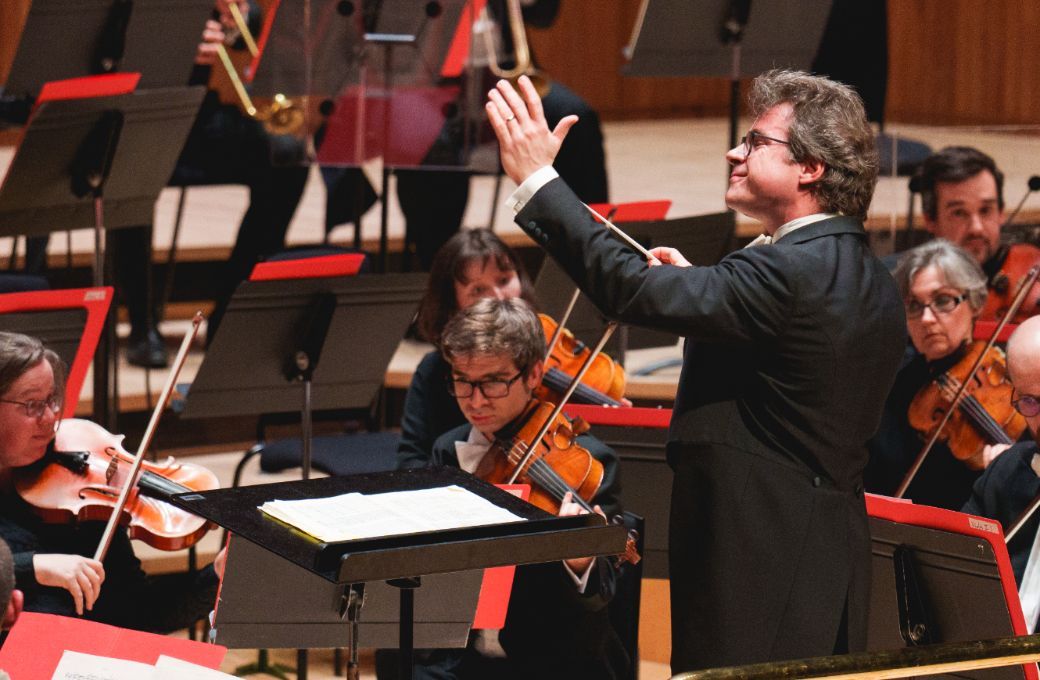“Dances of Death and Desire” was the title for Jakub Hrůša's programme, planned to proceed from Dvořák’s The Golden Spinning Wheel and Bartók’s The Miraculous Mandarin suite to the Dance of the Seven Veils and the closing scene from Salome. Macabre, but with a cumulative power culminating in Salome’s appalling address to a severed head. But soprano Jennifer Davis had to cancel, so Strauss’ Don Juan replaced the Salome closing scene, not quite fitting the ghoulish scenario, but well known to orchestras short on rehearsal time.

Late in his career Dvořák wrote five tone poems. Though three of them were first performed in London they are now rarities in our concert halls, and we are missing something, as this performance of The Golden Spinning Wheel showed. The piece is based on a gory folk tale as told by Karel Erben involving a King who loves a maid, but she is killed and dismembered by her wicked stepmother, until a cunning old man obtains the missing body parts, leading to a happy reassembly and royal wedding.
The work, expertly “narrated” by the conductor, was perfectly coherent here. More important than textual matters was the sheer invention in the score. Dvořák devised themes to fit Erben’s text, one reason it sounds Bohemian, and with a Czech conductor directing, the Philharmonia players relished the drama and colour.
Don Juan offered respite, the one piece that does not relate sex (directly) to violence, and less modernist than what followed. Strauss once explained to a conductor who noted the greater straightforwardness of this composition compared to later tone poems “I did not divide the strings back then”. The Philharmonia strings enjoyed that unanimity with some very athletic playing at the start, while Principal Oboe Timothy Rundle was outstanding in his great solo, beguilingly phrased, and the horn section delivered their heroic theme with brazen splendour. From that early work of 1888 to Salome in 1905 is to go from one century to the next chronologically, stylistically and orchestrally.
So the Dance of the Seven Veils saw a host of percussionists and others added to the orchestra. From the barbaric drumming and sinuous arabesques that launch the dance, through the languorous waltz, and on to the frenzied final section, this was a complete account, concentrating the whole drama into ten minutes. Ah, but now we were in the Tetrarch’s palace, on a sultry Middle Eastern night, the air heavy with menace. Only the closing scene of Salome would slake our decadent thirst!
But if menace and gore were now required then Bartók’s The Miraculous Mandarin, was the next best (or worst) thing. Also the suite from that score offers a similar condensation of the theatrical experience, and the performance was no less committed and virtuosic. The urban turmoil of the opening swirled wildly, and the frantic pounding string chords of the final chase were thrilling. If not always immaculate, since thrills bring spills, the effect was the sort of catharsis this programme required. The first performance in 1926 produced booing and whistling, here only cheers and applause.
Hrůša is a demonstrative conductor, cueing key moments with gestural flare, even sometimes leaping on the podium, above all energising the performers. On this hjghly impressive evidence, whether in spite of or because of demanding the same engagement from his musicians that he possesses, he seemed to be popular with them. When taking his bow, I wondered if he noticed the unusual number of children present – perhaps the fairy tale element of this X-rated programme led to this curious parenting choice. Should that closing scene of Salome be re-programmed, the orchestra might issue an age guide, or retitle the concert “Voyage to Necrophilia”...


